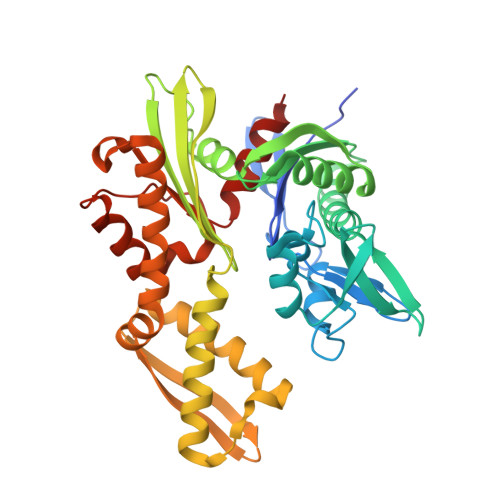Structural analysis of the Sil1-Bip complex reveals the mechanism for Sil1 to function as a nucleotide-exchange factor.
Yan, M., Li, J., Sha, B.(2011) Biochem J 438: 447-455
- PubMed: 21675960
- DOI: https://doi.org/10.1042/BJ20110500
- Primary Citation of Related Structures:
3QFP, 3QFU, 3QML - PubMed Abstract:
Sil1 functions as a NEF (nucleotide-exchange factor) for the ER (endoplasmic reticulum) Hsp70 (heat-shock protein of 70 kDa) Bip in eukaryotic cells. Sil1 may catalyse the ADP release from Bip by interacting directly with the ATPase domain of Bip. In the present study we show the complex crystal structure of the yeast Bip and the NEF Sil1 at the resolution of 2.3 Å (1 Å=0.1 nm). In the Sil1-Bip complex structure, the Sil1 molecule acts as a 'clamp' which binds lobe IIb of the Bip ATPase domain. The binding of Sil1 causes the rotation of lobe IIb ~ 13.5° away from the ADP-binding pocket. The complex formation also induces lobe Ib to swing in the opposite direction by ~ 3.7°. These conformational changes open up the nucleotide-binding pocket in the Bip ATPase domain and disrupt the hydrogen bonds between Bip and bound ADP, which may catalyse ADP release. Mutation of the Sil1 residues involved in binding the Bip ATPase domain compromise the binding affinity of Sil1 to Bip, and these Sil1 mutants also abolish the ability to stimulate the ATPase activity of Bip.
- Department of Cell Biology, University of Alabama at Birmingham, Birmingham, AL 35294-0005, USA.
Organizational Affiliation:



















